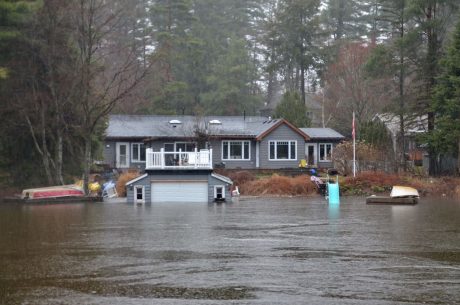As the saying goes, “April showers bring May flowers,” but what often accompanies those flowers is the potential for flooding. Heavy rains, overflowing rivers, and inadequate drainage systems can turn a serene neighborhood into a waterlogged nightmare. Flooding not only damages homes and personal belongings but also poses significant health risks. That’s why it’s crucial to take proactive steps to safeguard your home against potential flooding during the rainy season. Here are some comprehensive flood prevention tips to help you protect your home from May showers.
1. Understand Your Flood Risk
Before taking any preventive measures, it’s essential to understand your flood risk. Check your local flood maps and determine if your home is in a flood-prone area. These maps are typically available through your local government or the Federal Emergency Management Agency (FEMA) website. Knowing your flood risk can help you make informed decisions about the necessary precautions.
2. Maintain Gutters and Downspouts
Properly functioning gutters and downspouts are critical in directing rainwater away from your home’s foundation. Clogged gutters can cause water to overflow and pool around your house, leading to potential basement flooding and structural damage. Clean your gutters and downspouts regularly, especially before the rainy season, to ensure they are free of leaves, debris, and other obstructions.
3. Install a Sump Pump
A sump pump is a valuable investment for homes prone to flooding. It is installed in the lowest part of your basement or crawlspace and helps remove water that accumulates around your home’s foundation. Ensure your sump pump is in good working condition and consider installing a battery-operated backup system in case of a power outage during a severe storm.
4. Seal Cracks and Gaps
Water can seep into your home through even the smallest cracks and gaps in your foundation, walls, and windows. Inspect your home for any signs of wear and tear and seal any cracks with waterproof sealant. Pay special attention to areas where utilities enter your home, as these are common entry points for water.
5. Elevate Electrical Systems
Electrical components such as outlets, switches, and circuit breakers should be elevated above potential flood levels to prevent damage and reduce the risk of electrical hazards. If you live in a flood-prone area, consult with a licensed electrician to elevate your electrical systems and ensure they meet safety standards.
6. Landscape for Flood Prevention
Proper landscaping can significantly reduce the risk of flooding around your home. Ensure that your yard slopes away from your home’s foundation to prevent water from pooling. Use native plants and mulch to improve soil absorption and consider installing a rain garden to capture and filter runoff water. Additionally, avoid planting trees and shrubs with invasive root systems near your foundation, as they can cause cracks and damage.
7. Install Flood Vents
Flood vents are designed to allow water to flow through your foundation walls, reducing pressure and minimizing structural damage during a flood. These vents can be installed in crawlspaces and garages and are particularly beneficial for homes in high-risk flood areas. Make sure the vents are properly maintained and clear of debris.
8. Create a Flood Barrier
For homes at high risk of flooding, consider installing flood barriers or shields around doors and windows. These barriers can be temporary or permanent and are designed to prevent water from entering your home. Sandbags are another effective, temporary solution that can be used to divert water away from your property.
9. Keep an Emergency Kit Ready
In the event of a flood, having an emergency kit ready can make a significant difference. Your kit should include essential items such as non-perishable food, water, medications, flashlights, batteries, a first-aid kit, important documents, and contact information for emergency services. Ensure that all family members know where the kit is located and how to use its contents.
10. Develop a Flood Response Plan
Having a flood response plan in place can help you act quickly and efficiently during an emergency. Discuss evacuation routes, safe meeting points, and emergency contacts with your family. Practice the plan regularly to ensure everyone knows what to do in case of a flood. Additionally, consider signing up for local weather alerts to stay informed about potential flood risks.
Stay Prepared with PuroClean
Flood prevention requires a proactive approach and diligent maintenance. By implementing these flood prevention tips, you can significantly reduce the risk of water damage to your home and ensure the safety of your family. However, despite your best efforts, floods can still occur. When disaster strikes, PuroClean is here to help.
PuroClean specializes in water damage restoration and flood cleanup services. Our experienced professionals use state-of-the-art equipment and techniques to remove water, dry affected areas, and restore your home to its pre-flood condition. We understand the urgency of flood damage and are available 24/7 to provide prompt and reliable assistance.
Don’t wait until it’s too late. Contact PuroClean today to learn more about our water damage restoration services and how we can help you protect your home from the devastating effects of flooding. With PuroClean by your side, you can have peace of mind knowing that your home is in capable hands.
Take action now to safeguard your property against May showers. Call PuroClean and let us help you weather any storm with confidence.



